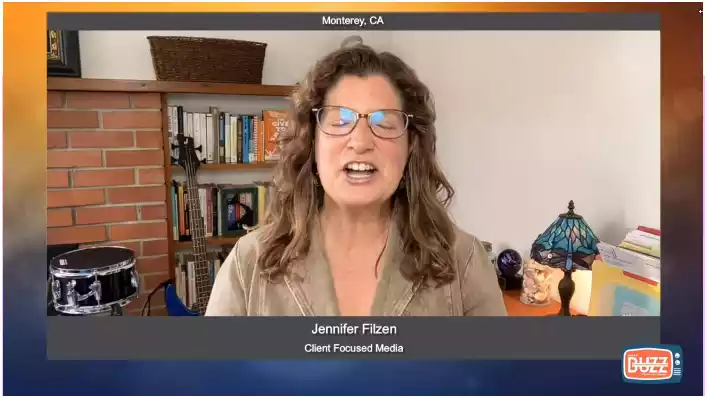Launching New Services with Optimized Prior Authorization
Discover how launching new services with optimized prior authorization, improving efficiency and patient care. Learn the key strategies to enhance your practice's workflow.

Understanding the role of prior authorization in healthcare is vital for navigating insurance processes. Prior authorization in healthcare is a requirement where your health insurer must approve certain medical services or medications before they are provided. This step ensures that the proposed treatments are medically necessary and covered under your insurance plan, helping to manage costs and prevent unnecessary procedures. This process can reduce administrative burdens and support the overall well-being of healthcare providers by streamlining care delivery.
Let’s start now!
Table of Contents
Launching New Services with Optimized Prior Authorization
The field of healthcare is constantly changing. Keeping up with the trends involves more than just adopting new services. It also requires optimizing the processes we already have in place. One essential process in healthcare is prior authorization (PA), which ensures that resources are used appropriately and that patients are kept safe. However, PA can sometimes act as a bottleneck, causing challenges in the functioning of healthcare services. Our new services aim to transform this process, making it more efficient and effective. This blog post will explore how we are improving PA to make it a facilitator rather than a hindrance, ultimately enhancing the effectiveness of our services and leading to patient outcomes.
The Struggle with Prior Authorization
Prior Authorization (PA) can pose a challenge in healthcare services. PA requires doctors to get approval from insurance providers before providing patient care, which can be time-consuming. The paperwork involved can potentially result in delays in patient treatment.
Moreover, the complexity of the PA process can sometimes lead to confusion and denials that need to be addressed. This adds to burdens and takes valuable time away from patient care. Consequently, inefficiencies related to PA can hinder the rollout of services and impact the overall effectiveness of healthcare delivery. Real-life scenarios vividly illustrate the difficulties associated with the Prior Authorization (PA) system. For instance, a doctor may encounter a time-consuming process when trying to prescribe medication for a patient with a rare condition, leading to extended wait times that could worsen the patient’s health.
Another situation could involve a healthcare provider wanting to introduce a health screening service. Despite its benefits for patient care, the provider might need help with the complexities of obtaining PA from insurance companies, each with its own criteria and approval procedures. In another case, a physician wanting to switch a patient to a nontraditional treatment might face obstacles due to strict PA requirements, resulting in treatment delays and less-than-optimal patient outcomes. These examples underscore the necessity for a PA process that facilitates and hinders the delivery of effective healthcare services.
The Significance of Enhancing Prior Authorization
Impact of PA on Patient Safety
Improving the Prior Authorization process has the potential to boost patient safety. A simplified PA procedure can lead to approvals, reduce treatment delays, and ensure the provision of healthcare services. This is especially critical for patients with conditions requiring attention. Moreover, a functioning prior authorization (PA) system ensures that the treatments, procedures, and medications prescribed are necessary from a medical standpoint. This helps in avoiding risks associated with treatments.
Additionally, by reducing errors and misunderstandings, an optimized PA process can lower instances of denied or incorrect treatments, thus safeguarding patient well-being. Ultimately, an efficient PA process contributes significantly to improving the quality of healthcare delivery and enhancing safety.
Impact of Streamlined Prior Authorization on Resource Allocation
Optimizing the Prior Authorization process can significantly change how healthcare resources are utilized. First, it helps ease the burden typically associated with the PA process. By reducing paperwork and simplifying approval procedures, healthcare providers can devote time to direct patient care rather than administrative duties.
Secondly, an optimized PA system boosts the efficiency of healthcare services. Quicker approval processes enable physicians to promptly incorporate treatments and procedures into their practice, offering patients cutting-edge healthcare options. This swift adoption of services leads to improved outcomes and more effective utilization of healthcare resources in the long run. A working prior authorization (PA) system helps distribute medical resources by verifying a service’s medical needs before delivery. This guarantees that resources are utilized wisely without procedures, allowing them to be saved for patients who require them the most. Improving the PA process can create an economic healthcare system, benefiting patients and healthcare providers.
Transforming the Prior Authorization Process into a Helper through Better Management
The key to changing the Prior Authorization process from a barrier to a helper lies in using optimization techniques. Initially, it involves converting the process into an automated system, which removes the need for time-consuming paperwork and minimizes the risk of mistakes. We can automate the PA process by utilizing platforms, allowing information sharing between healthcare providers and insurance companies for faster approvals. Another crucial aspect of optimizing PA is seamlessly integrating it with Electronic Health Record (EHR) systems. This integration enables checks against the patient’s history, insurance coverage details, and current treatment guidelines. This ensures that services are medically necessary, leading to accurate approvals that result in patient care delivery.
Furthermore, standardizing the PA process among insurers can significantly enhance efficiency. Having criteria and procedures simplifies PA processes, making it easier for healthcare providers to grasp and follow required protocols. In conclusion, optimizing the Prior Authorization process can transform it from an obstacle to a tool that promptly ensures healthcare service delivery and integrates new services into its practices. Optimizing the Prior Authorization (PA) process improves patient care quality and efficiency. By digitizing and standardizing the PA process, physicians can launch services efficiently. Integrating the optimized PA process with Electronic Health Record (EHR) systems ensures service approval by checking patient medical history, insurance coverage, and treatment guidelines. This integration reduces delays in service delivery, enhancing satisfaction and outcomes.
Additionally, optimizing the PA process enables physicians to seamlessly incorporate treatments into their practice. The quicker approval processes associated with an authorization system enable the timely introduction of the latest and most efficient healthcare options. This enhances well-being and positions healthcare providers at the forefront of medical advancements. Additionally, an optimized prior authorization system can result in cost-effective healthcare delivery. By confirming the necessity of service before its provision, unnecessary procedures are avoided, leading to savings that can be reallocated to launching and sustaining new services. Overall, improving the authorization process is a tool for physicians looking to introduce new services, turning a previously hindering process into a catalyst for innovation and patient care.
I'm very thankful for Portiva who I know is looking after my practice while I'm gone the virtual assistants can manage prescription refills, documents they can triage patients and just kind of answer administrative questions and they can handle a lot on their own. But also, they're very good about contacting me if there's any emergency or anything I need to attend to. So I'm very thankful for Portiva they can help almost any provider almost anywhere and it really allows for some good work-life balance as I'm getting to experience right now at my family farm so I'm very thankful for Portiva and I'm very happy to use their services"

Board Certified Family Medicine Physician

Portiva's Virtual Medical Assistant - I have all the support I need. There's somebody checking my email, any patient messages. Patients are still able to schedule and handle any scheduling issues and any kind of billing that needs to still go through. Portiva hands handles it all for me. I have support i have somebody that I can access 24/7 pretty much. It's all very seamless. If somebody has an emergency or needs a medication called in. I know that the va's at portiva will handle that for me.

Board Certified Family Medicine Physician

In summary

Improving the authorization (PA) process goes beyond being efficient; it involves creating a culture of progress and creativity in healthcare. It’s about ensuring patients access up-to-date and efficient healthcare choices, leading to health results and increased patient contentment. Thus, enhancing the PA process is a measure for any healthcare provider looking to keep up with progress and consistently improve the standard of patient care.
To learn more about policy that can enhance your medical practice. Discover more about Portiva and unlock a world of possibilities by visiting our homepage today!
- Understanding electronic prior authorization
- Influence of digital prior authorization
- Prior authorization enhances healthcare delivery
- Improving patient care by managing authorization denials
- Prior authorization skills
- Decoding prior authorization in healthcare law
- Prior authorization policies: how healthcare providers can adapt
- Prior authorization support for healthcare providers
- Mastering best practices for prior authorization
- Effects of prior authorization on healthcare delivery and patient outcomes
- Prior authorization for healthcare consumers
- The patient’s guide to prior authorization processes
- True impact of prior authorization on patients
- Accessing health services timely with the prior authorization process
- Maintaining data security in the time of prior authorization
- Exploring prior authorization services
- Handling insurance to expedite precertification
- Preventing burnout with precertification by portiva
- Launching new services with optimized prior authorization



